Another month has passed by and the barley is starting to turn. Looking at the current conditions, we are about three weeks away from cutting the spring barley.
Up until two years ago, we cut it all ourselves with a 40-year old Laverda. Unfortunately, it broke down and repairing it was not going to be economical.
We hired a combine to get through that harvest and then last year, we brought in a contractor.
We are reconsidering our options this year and are looking at whether we should purchase another secondhand, older combine of our own or bring in a contractor.
We have run through the costings and the difference between buying a second-hand older combine and driving it ourselves or getting in a contractor is quite small, so we are finalising what we will do here in the next few days.
Livestock
Meanwhile on the livestock, the summer calving heifers have nearly all calved with only one left still to calve.
The rest all came in one quick batch, giving us a really even group of calves for selling. The intention is for them to go to the breeding sale at Thainstone on 26 September.
With two of the older cows in the herd still to calve, we are seriously considering their place in the herd.
Whilst they have served us well over the past 14 years, they really don’t fit in as part of the plan to tighten the calving period. They are due to calve shortly and will not see the bull here again.
Taking these two geriatrics out of the equation and taking the bulls away from the cows in September this year will help to tighten things up and improve our spring workload.
Silage
We have all of our silage gathered in and can now do a feed budget for next year. The pit is sitting with around 170t of dry matter in it.
We also got 20bales/hectare from the rest of the silage that we cut, giving us 160 bales. This gives us another 40t of dry matter in stock.
Based on those numbers, we have a shortfall of 38t of dry matter. As mentioned in the previous update, we will ammonia-treat some straw to cover this shortfall.
Our plan is that the cows will be fed purely treated straw up until the last six weeks pre-calving.
At this point, we will swap them on to half ammonia straw/half silage (dry matter basis) to take them up to calving.
This should ensure that the cows are in fit condition for calving and cover most of the silage shortfall.
We anticipate that the ammonia treatment will cost us somewhere in the region of £25/t to do. We have our own automatic tubeline wrapper to wrap the straw anyway, so it means that we can be quite flexible for getting the wrapping done.
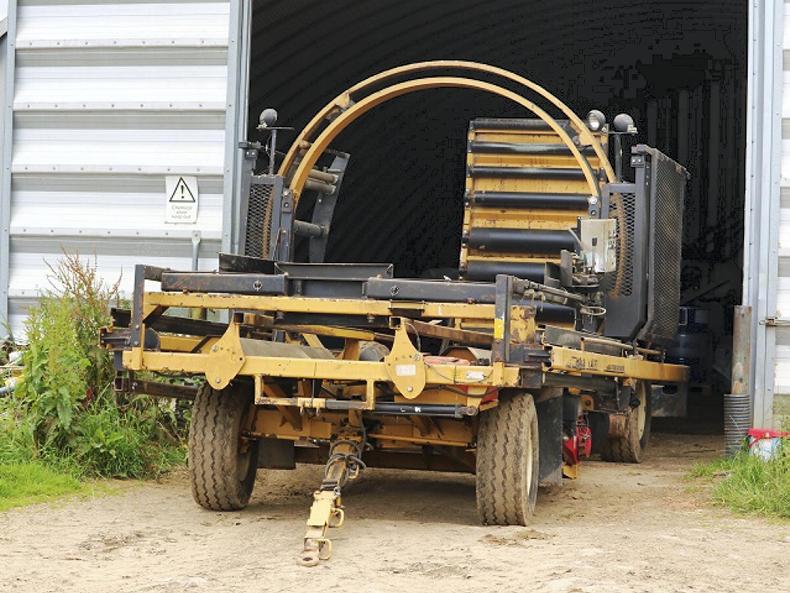
Putting a value on the straw and adding in the wrapping cost, it should cost us around £100/t of dry matter, similar to the cost of the silage.
However, being a more slowly digested feed, the cattle shouldn’t eat as much of it which should reduce the bedding requirement pre-calving.
We will keep a tally on things and compare and contrast the past winter with the coming one in the spring and see what works out best. Purchasing straw to treat is effectively increasing our acres without buying or renting ground as it would allow us to cut less silage and graze the grass instead.
Weaned lambs
After weaning the lambs last month, they are grazing an 8ha direct reseed that we put down this year.
So far, we have sold 75 wedder lambs at an average of £96.05. Those that are left are growing well and we should see most of them off farm by October.
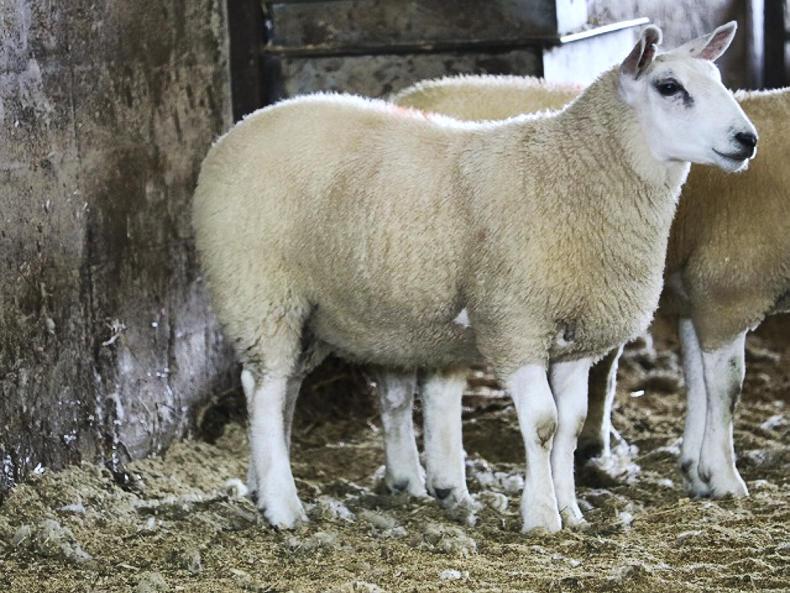
Wedder lamb drawn for sale
We still have all of the ewe lambs on the farm and will go through them to pick the best for selling as breeding stock.
Some of these will be sold as ewe lambs, with the rest being gimmered for next year. The remainder will be sold fat.
Ahead of selling we colour-dip all of the ewe lambs and gimmers to present them better in the sale ring. It is also handy at home when drawing lambs as the wedders are really easy to identify.
Next year's lambs
Turning our attention to next year’s lamb crop, the rams will be heading back in with the ewes again later next month, so we are preparing for that.
We need a few replacements and the majority of those will come from our homebred gimmers with any others being bought from breeding sales.
We are aiming to tighten up lambing this year and to help this, we will be making the most of the ram effect.
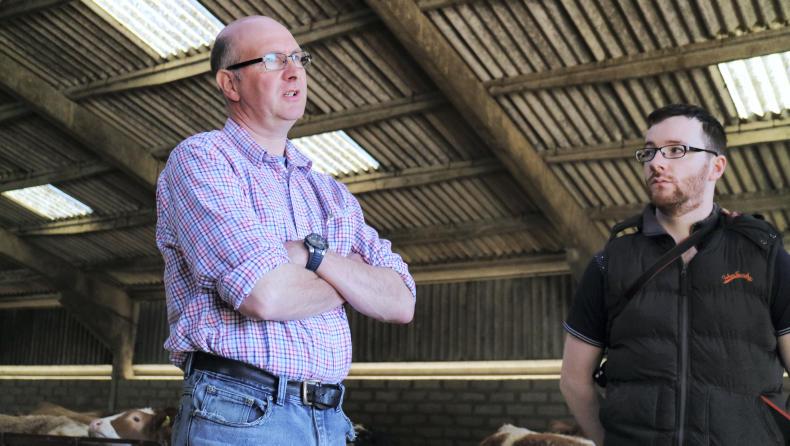
Charles Webster with Farm Profit Programme advisors
Three weeks prior to the rams being properly turned out, we will put harnesses on to the rams to prevent them serving ewes and run them with the ewes up until serving.
This will stimulate the ewes to cycle and by the time the rams actually go out, the majority of sheep should be cycling.
This will tighten up the tupping period and will mean that lambing should be a short, sharp burst of activity, making better use of our time.
Winter grazing
With this in mind, we also need to plan out our grazing for winter and ensure that the lambing parks reach lambing time with a good level of grass cover on them.
The last couple of years have seen a bit of mastitis in the ewes, with the lambs being quite hard on them.
This coming year, with more grazing available to the ewes at lambing time, we are hoping that the lambs won’t be quite so hard on their mothers and reduce the incidence of mastitis.
We were also bothered a bit with ewes prolapsing pre-lambing over the past couple of years.
With one of the suggested causes being a lack of magnesium availability in the grass for the ewes, we are changing the pre-lambing parks as the one that we have been using for the past couple of years was soil sampled and was quite high in potassium.
We are going to lamb in a different field and then the ewes will graze the other park post lambing. In the long term, we are amending the fertiliser policy to bring all of the fields in to balance.
Read more
Farm Profit Programme: Quality silage to drive performance at Mains of Arnage
Farm Profit Programme: growing their way to success
Another month has passed by and the barley is starting to turn. Looking at the current conditions, we are about three weeks away from cutting the spring barley.
Up until two years ago, we cut it all ourselves with a 40-year old Laverda. Unfortunately, it broke down and repairing it was not going to be economical.
We hired a combine to get through that harvest and then last year, we brought in a contractor.
We are reconsidering our options this year and are looking at whether we should purchase another secondhand, older combine of our own or bring in a contractor.
We have run through the costings and the difference between buying a second-hand older combine and driving it ourselves or getting in a contractor is quite small, so we are finalising what we will do here in the next few days.
Livestock
Meanwhile on the livestock, the summer calving heifers have nearly all calved with only one left still to calve.
The rest all came in one quick batch, giving us a really even group of calves for selling. The intention is for them to go to the breeding sale at Thainstone on 26 September.
With two of the older cows in the herd still to calve, we are seriously considering their place in the herd.
Whilst they have served us well over the past 14 years, they really don’t fit in as part of the plan to tighten the calving period. They are due to calve shortly and will not see the bull here again.
Taking these two geriatrics out of the equation and taking the bulls away from the cows in September this year will help to tighten things up and improve our spring workload.
Silage
We have all of our silage gathered in and can now do a feed budget for next year. The pit is sitting with around 170t of dry matter in it.
We also got 20bales/hectare from the rest of the silage that we cut, giving us 160 bales. This gives us another 40t of dry matter in stock.
Based on those numbers, we have a shortfall of 38t of dry matter. As mentioned in the previous update, we will ammonia-treat some straw to cover this shortfall.
Our plan is that the cows will be fed purely treated straw up until the last six weeks pre-calving.
At this point, we will swap them on to half ammonia straw/half silage (dry matter basis) to take them up to calving.
This should ensure that the cows are in fit condition for calving and cover most of the silage shortfall.
We anticipate that the ammonia treatment will cost us somewhere in the region of £25/t to do. We have our own automatic tubeline wrapper to wrap the straw anyway, so it means that we can be quite flexible for getting the wrapping done.

Putting a value on the straw and adding in the wrapping cost, it should cost us around £100/t of dry matter, similar to the cost of the silage.
However, being a more slowly digested feed, the cattle shouldn’t eat as much of it which should reduce the bedding requirement pre-calving.
We will keep a tally on things and compare and contrast the past winter with the coming one in the spring and see what works out best. Purchasing straw to treat is effectively increasing our acres without buying or renting ground as it would allow us to cut less silage and graze the grass instead.
Weaned lambs
After weaning the lambs last month, they are grazing an 8ha direct reseed that we put down this year.
So far, we have sold 75 wedder lambs at an average of £96.05. Those that are left are growing well and we should see most of them off farm by October.

Wedder lamb drawn for sale
We still have all of the ewe lambs on the farm and will go through them to pick the best for selling as breeding stock.
Some of these will be sold as ewe lambs, with the rest being gimmered for next year. The remainder will be sold fat.
Ahead of selling we colour-dip all of the ewe lambs and gimmers to present them better in the sale ring. It is also handy at home when drawing lambs as the wedders are really easy to identify.
Next year's lambs
Turning our attention to next year’s lamb crop, the rams will be heading back in with the ewes again later next month, so we are preparing for that.
We need a few replacements and the majority of those will come from our homebred gimmers with any others being bought from breeding sales.
We are aiming to tighten up lambing this year and to help this, we will be making the most of the ram effect.

Charles Webster with Farm Profit Programme advisors
Three weeks prior to the rams being properly turned out, we will put harnesses on to the rams to prevent them serving ewes and run them with the ewes up until serving.
This will stimulate the ewes to cycle and by the time the rams actually go out, the majority of sheep should be cycling.
This will tighten up the tupping period and will mean that lambing should be a short, sharp burst of activity, making better use of our time.
Winter grazing
With this in mind, we also need to plan out our grazing for winter and ensure that the lambing parks reach lambing time with a good level of grass cover on them.
The last couple of years have seen a bit of mastitis in the ewes, with the lambs being quite hard on them.
This coming year, with more grazing available to the ewes at lambing time, we are hoping that the lambs won’t be quite so hard on their mothers and reduce the incidence of mastitis.
We were also bothered a bit with ewes prolapsing pre-lambing over the past couple of years.
With one of the suggested causes being a lack of magnesium availability in the grass for the ewes, we are changing the pre-lambing parks as the one that we have been using for the past couple of years was soil sampled and was quite high in potassium.
We are going to lamb in a different field and then the ewes will graze the other park post lambing. In the long term, we are amending the fertiliser policy to bring all of the fields in to balance.
Read more
Farm Profit Programme: Quality silage to drive performance at Mains of Arnage
Farm Profit Programme: growing their way to success









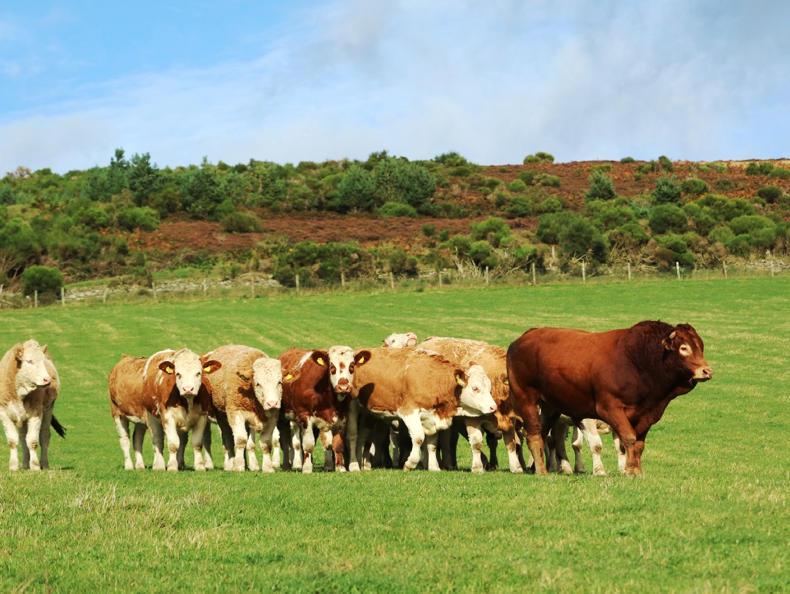
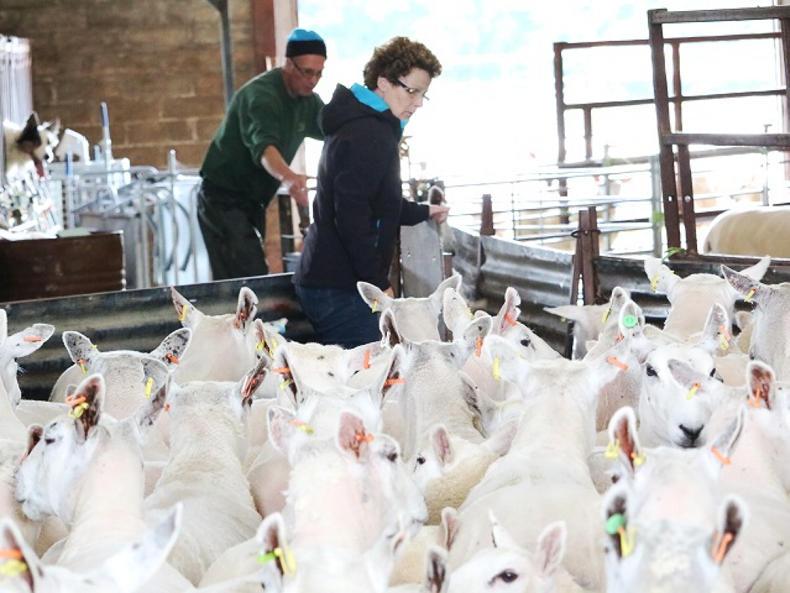
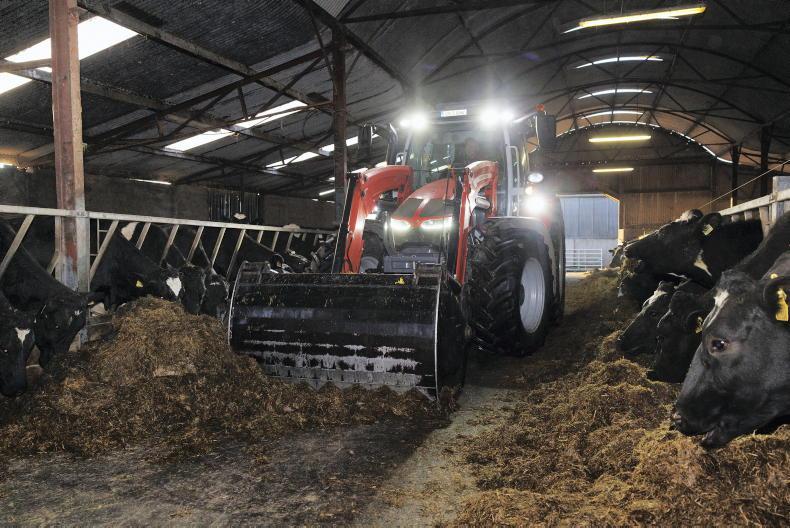
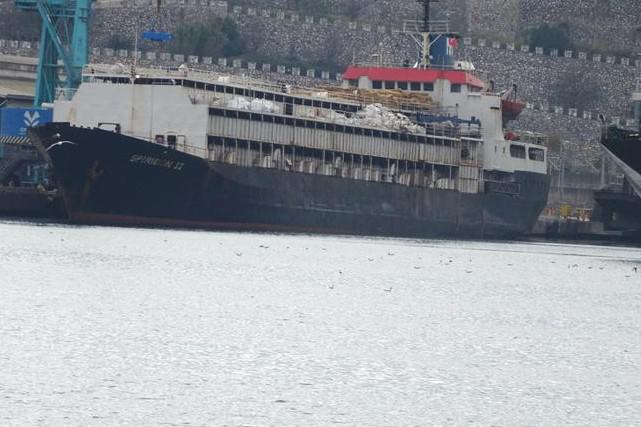
SHARING OPTIONS